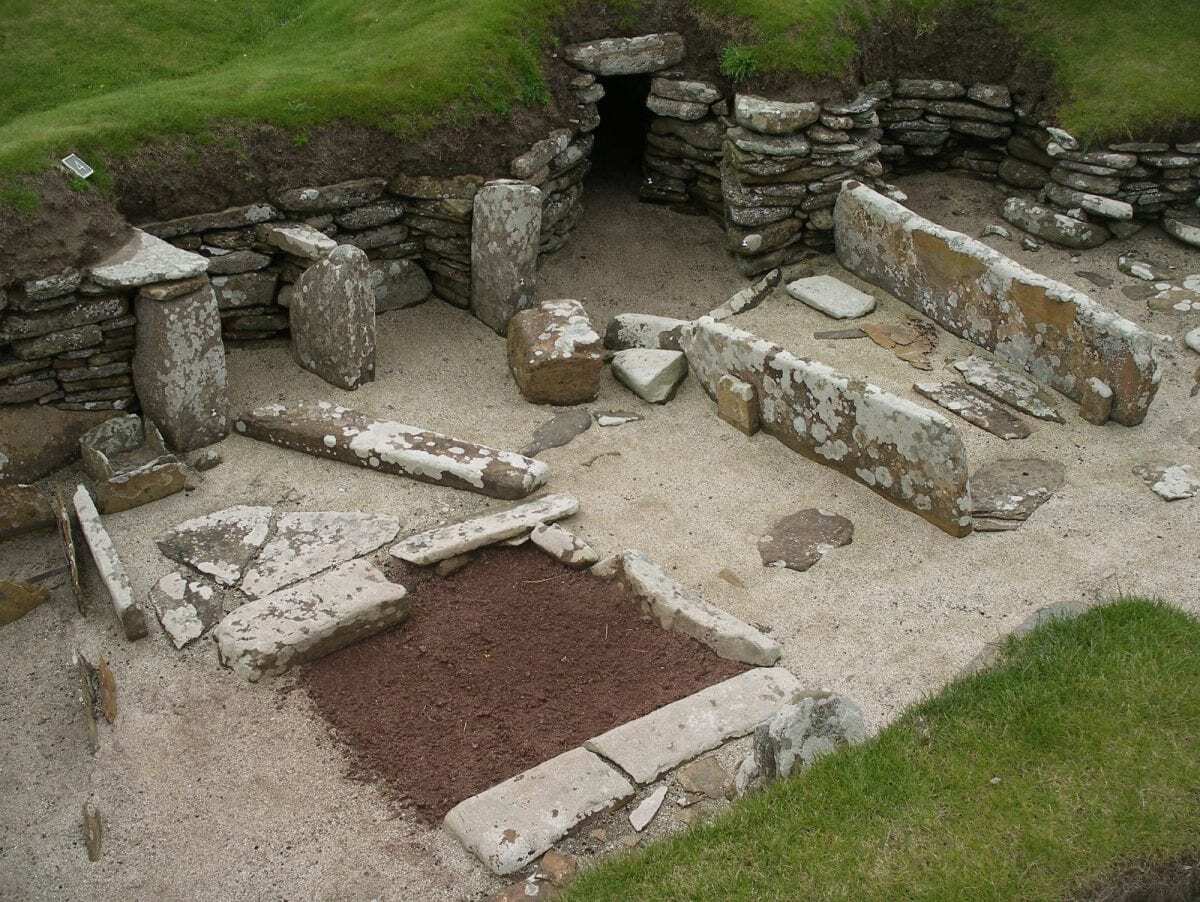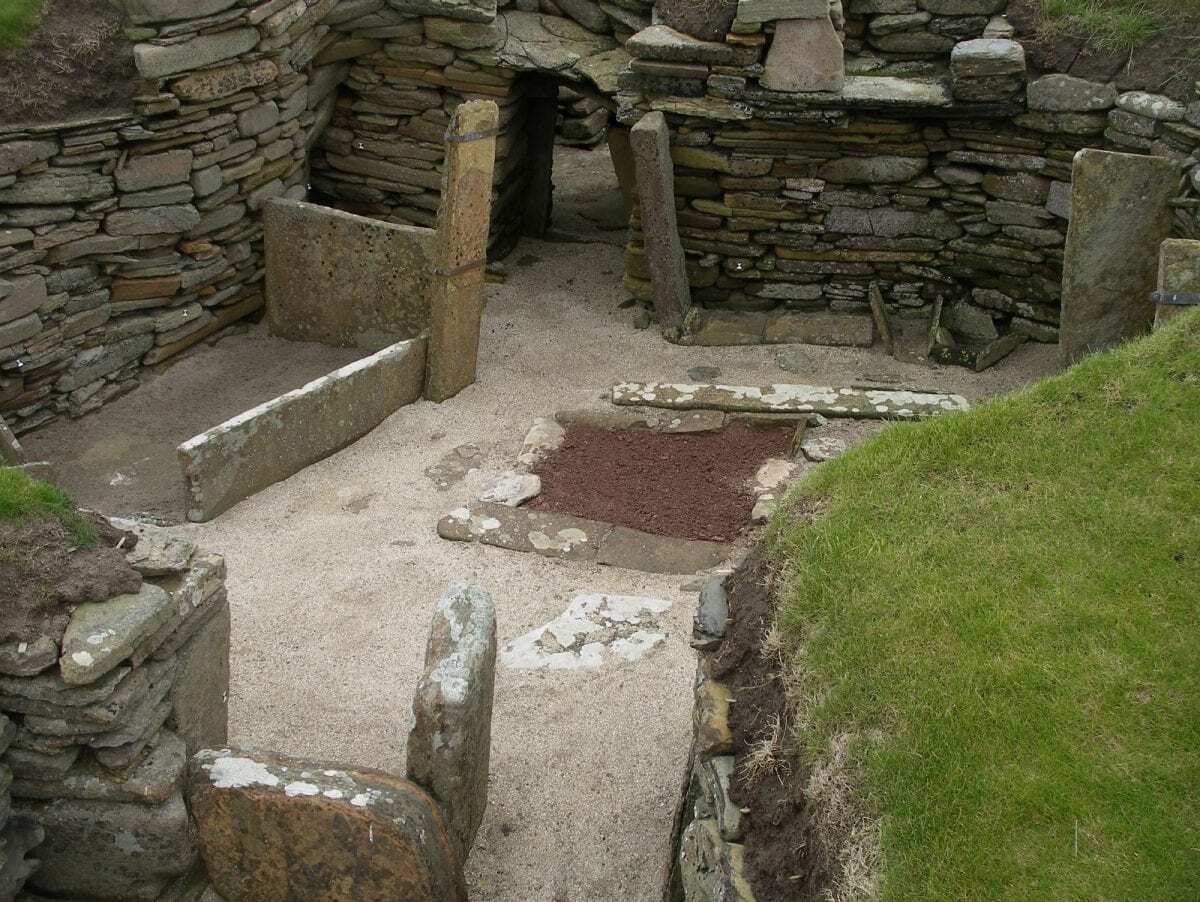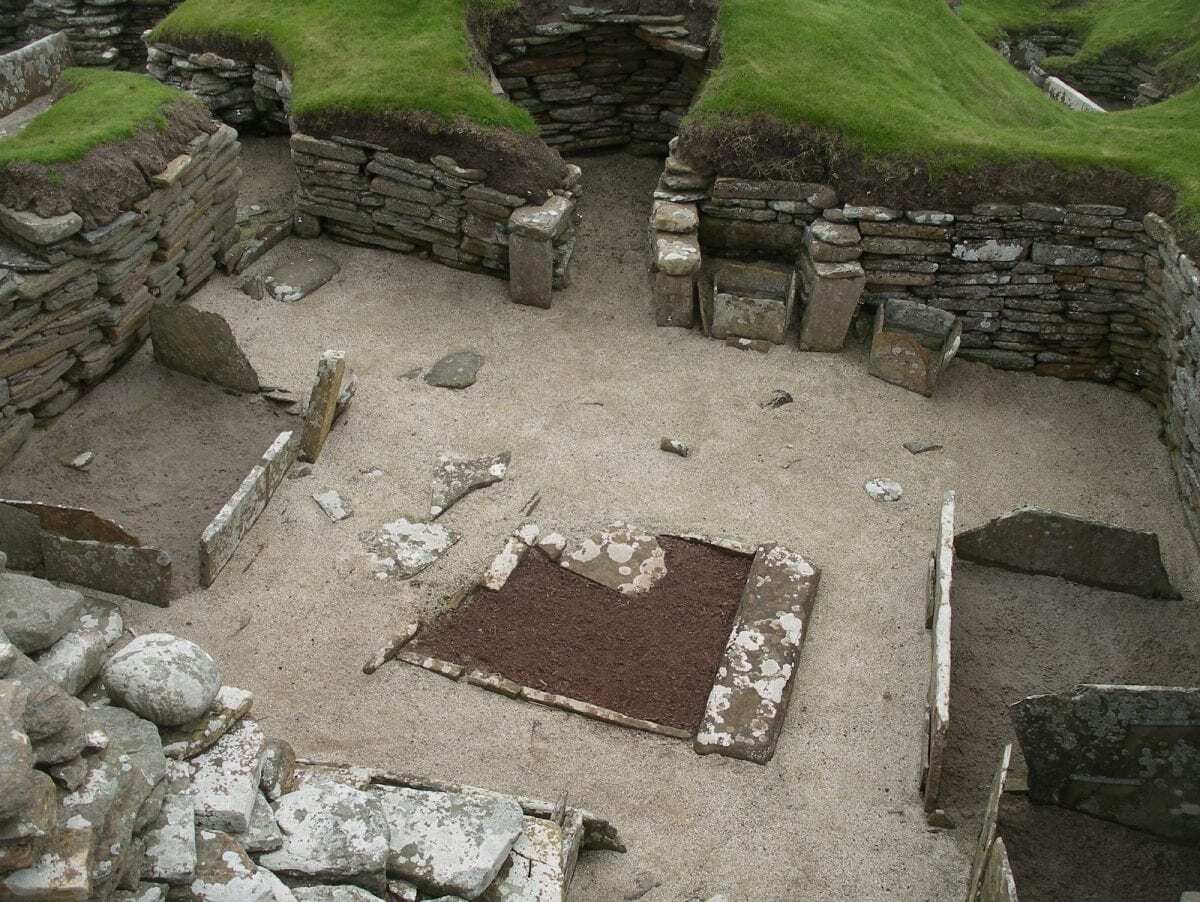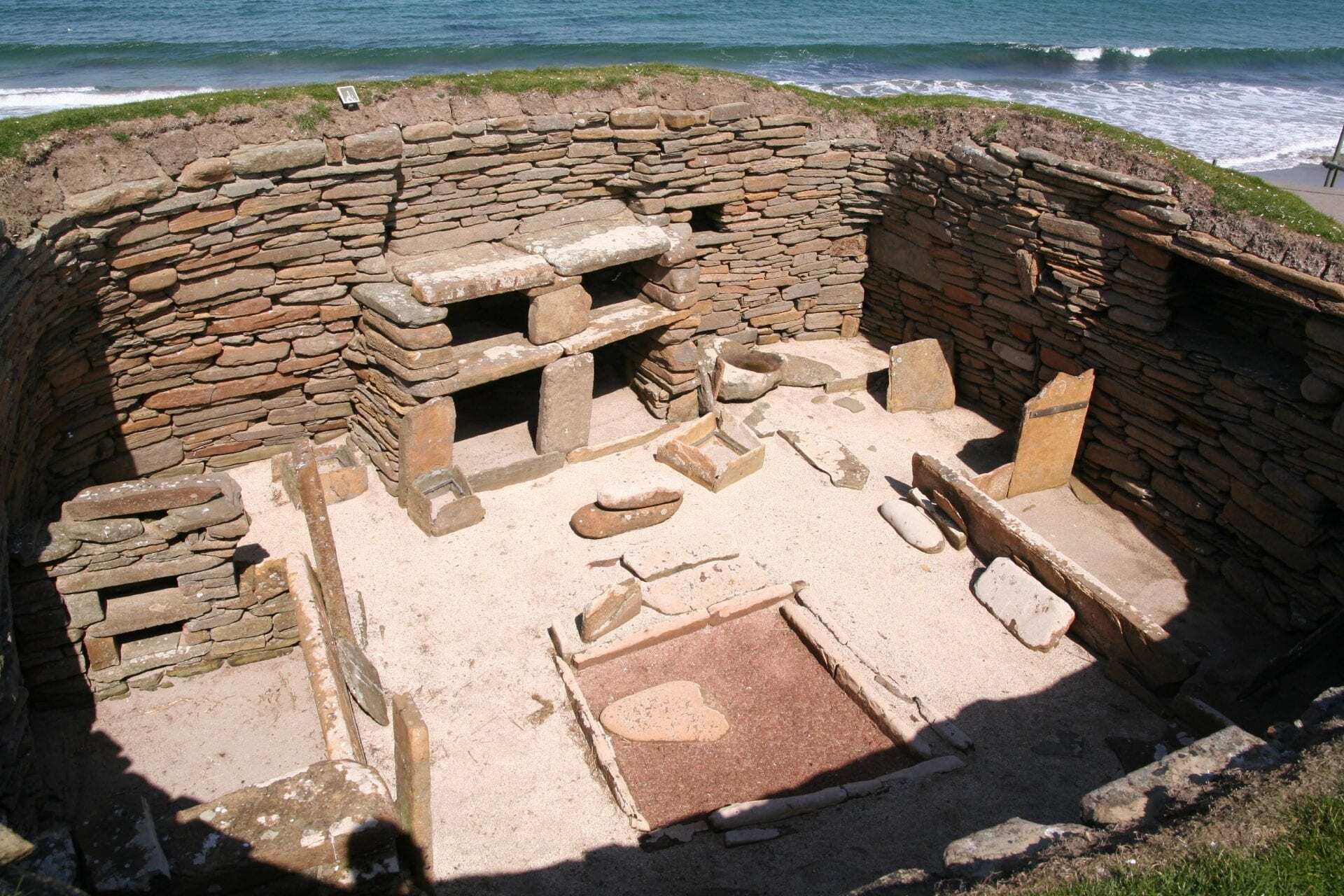Skara Brae is a Neolithic settlement on the Bay of Skaill in Orkney Scotland that dates from 3180 to 2500 BC.
The site was discovered by chance when the storm of 1850 struck Scotland causing widespread damage along the coast. The storm stripped the earth from a knoll known as “Skerrabra” revealing several stone houses.
The inhabitants of Skara Brae used flagstones, layered into the ground, and filled the spaces with earth and middens (domestic rubbish) to construct their homes. This gave the structure protection and insulation against the harsh elements of the North Sea.

Given the number of homes, it is estimated that around 50 people inhabited Skara Brae and are known as the Grooved ware people (based on the pottery style). Grooved culture was not an import from the continent but seems to have developed in Orkney, early in the 3rd millennium BC, and was soon adopted in Britain and Ireland. Since many Grooved ware pots have been found at henge sites and in burials, it is possible that they may have had a ritual purpose as well as a functional one.
The Grooved Ware People were primarily pastoralists who raised cattle and ate seafood, evident by the many fish bones and shells found in the middens, but excavations in 1972 discovered seed grains that suggested barley may have been cultivated.

Each house measures around 40 square metres and contains a large square room and a central hearth for heating and cooking. Many dwellings on the site contain stone-built furniture that includes beds, dressers, cupboards, seats, and stone boxes for storage.
Around 2500 BC, the climate in Orkney become harsher which may have led to the site being abandoned. One theory suggests that a major storm event caused an abrupt end to the community, evident by the high-status valuables such as necklaces made from animal teeth and bone, or pins of walrus ivory having been left behind.

In 1999, Skara Brae, along with the Maeshowe, the Ring of Brodgar, the Standing Stones of Stennes and adjacent sites of archaeological interest was inscribed as a World Heritage Site named “The Heart of Neolithic Orkney”.
Header Image Credit : swifant







